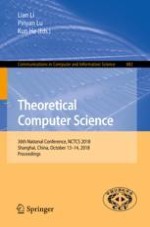2018 | Buch
Theoretical Computer Science
36th National Conference, NCTCS 2018, Shanghai, China, October 13–14, 2018, Proceedings
herausgegeben von: Lian Li, Pinyan Lu, Kun He
Verlag: Springer Singapore
Buchreihe : Communications in Computer and Information Science
